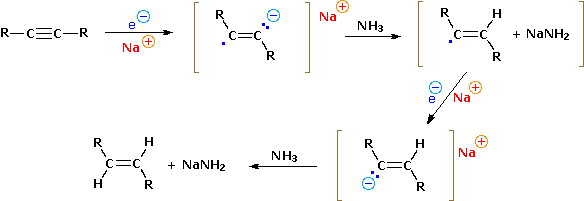

علم الكيمياء

تاريخ الكيمياء والعلماء المشاهير

التحاضير والتجارب الكيميائية

المخاطر والوقاية في الكيمياء

اخرى

مقالات متنوعة في علم الكيمياء

كيمياء عامة


الكيمياء التحليلية

مواضيع عامة في الكيمياء التحليلية

التحليل النوعي والكمي

التحليل الآلي (الطيفي)

طرق الفصل والتنقية


الكيمياء الحياتية

مواضيع عامة في الكيمياء الحياتية

الكاربوهيدرات

الاحماض الامينية والبروتينات

الانزيمات

الدهون

الاحماض النووية

الفيتامينات والمرافقات الانزيمية

الهرمونات


الكيمياء العضوية

مواضيع عامة في الكيمياء العضوية

الهايدروكاربونات

المركبات الوسطية وميكانيكيات التفاعلات العضوية

التشخيص العضوي

تجارب وتفاعلات في الكيمياء العضوية


الكيمياء الفيزيائية

مواضيع عامة في الكيمياء الفيزيائية

الكيمياء الحرارية

حركية التفاعلات الكيميائية

الكيمياء الكهربائية


الكيمياء اللاعضوية

مواضيع عامة في الكيمياء اللاعضوية

الجدول الدوري وخواص العناصر

نظريات التآصر الكيميائي

كيمياء العناصر الانتقالية ومركباتها المعقدة


مواضيع اخرى في الكيمياء

كيمياء النانو

الكيمياء السريرية

الكيمياء الطبية والدوائية

كيمياء الاغذية والنواتج الطبيعية

الكيمياء الجنائية


الكيمياء الصناعية

البترو كيمياويات

الكيمياء الخضراء

كيمياء البيئة

كيمياء البوليمرات

مواضيع عامة في الكيمياء الصناعية

الكيمياء الاشعاعية والنووية
Nucleophilic Addition Reactions & Reduction of alkynes
المؤلف:
William Reusch
المصدر:
Virtual Textbook of Organic Chemistry
الجزء والصفحة:
............
8-10-2018
3141
Nucleophilic Addition Reactions & Reduction of alkynes
The sp-hybrid carbon atoms of the triple-bond render alkynes more electrophilic than similarly substituted alkenes. As a result, alkynes sometimes undergo addition reactions initiated by bonding to a nucleophile. This mode of reaction, illustrated below, is generally not displayed by alkenes, unless the double-bond is activated by electronegative substituents, e.g. F2C=CF2, or by conjugation with an electron withdrawing group.
HC≡CH + KOC2H5 in C2H5OH at 150 ºC ——> H2C=CH-OC2H5
HC≡CH + HCN + NaCN (catalytic) ——> H2C=CH-CN
The smallest and most reactive nucleophilic species is probably an electron. Electron addition to a functional group is by definition a reduction, and we noted earlier that alkynes are reduced by solutions of sodium in liquid ammonia to trans-alkenes. To understand how this reduction occurs we first need to identify two distinct reactions of sodium with liquid ammonia (boiling point -78 ºC). In the first, sodium dissolves in the pure liquid to give a deep blue solution consisting of very mobile and loosely bound electrons together with solvated sodium cations (first equation below). For practical purposes, we can consider such solutions to be a source of "free electrons" which may be used as powerful reducing agents. In the second case, ferric salts catalyze the reaction of sodium with ammonia, liberating hydrogen and forming the colorless salt sodium amide (second equation). This is analogous to the reaction of sodium with water to give sodium hydroxide, but since ammonia is 1018 times weaker an acid than water, the reaction is less violent. The usefulness of this reaction is that sodium amide, NaNH2, is an exceedingly strong base (18 powers of ten stronger than sodium hydroxide), which may be used to convert very weak acids into their conjugate bases.
| Na + NH3 (liquid, –78 ºC ) ——> Na(+) + e(–) (a blue solution) |
| Na + NH3 (liquid, –78 ºC ) + Fe ——> H2 + NaNH2 (a colorless solution) |
Returning to the reducing capability of the blue electron solutions, we can write a plausible mechanism for the reduction of alkynes to trans-alkenes, as shown below. Isolated carbon double-bonds are not reduced by sodium in liquid ammonia, confirming the electronegativity difference between sp and sp2 hybridized carbons.

 الاكثر قراءة في الهايدروكاربونات
الاكثر قراءة في الهايدروكاربونات
 اخر الاخبار
اخر الاخبار
اخبار العتبة العباسية المقدسة

الآخبار الصحية















 قسم الشؤون الفكرية يصدر كتاباً يوثق تاريخ السدانة في العتبة العباسية المقدسة
قسم الشؤون الفكرية يصدر كتاباً يوثق تاريخ السدانة في العتبة العباسية المقدسة "المهمة".. إصدار قصصي يوثّق القصص الفائزة في مسابقة فتوى الدفاع المقدسة للقصة القصيرة
"المهمة".. إصدار قصصي يوثّق القصص الفائزة في مسابقة فتوى الدفاع المقدسة للقصة القصيرة (نوافذ).. إصدار أدبي يوثق القصص الفائزة في مسابقة الإمام العسكري (عليه السلام)
(نوافذ).. إصدار أدبي يوثق القصص الفائزة في مسابقة الإمام العسكري (عليه السلام)


















